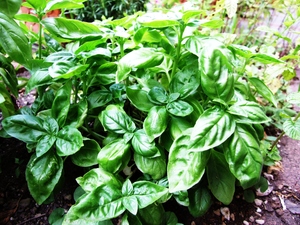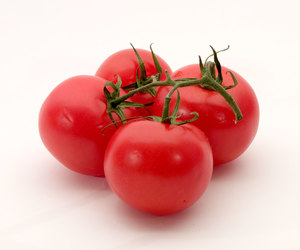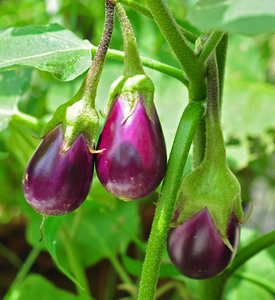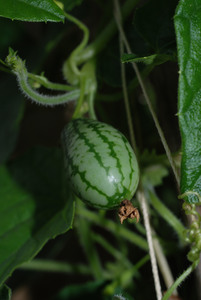Permaculture companion plants for Asparagus
| Image | Name | Data | Description | Actions |
|---|---|---|---|---|

|
Basil |
5-10
Annual, Perennial
Full sun
Moist
Light (sandy), Medium
0.5
Herbs
true
Leaves, Seed
Seed - direct sow
https://en.wikipedia.org/wiki/Basil
Fast
Common basil, Thai basil, Tropical basil
Lamiaceae or labiatae
Basilikum
https://pfaf.org/User/Plant.aspx?LatinName=Ocimum basilicum
Start indoors from late february to mid-summer
Can be grown in containers
1.1
Andaman Is., Assam, Bangladesh, Bismarck Archipelago, Borneo, Cambodia, China South-Central, China Southeast, East Himalaya, India, Jawa, Laos, Lesser Sunda Is., Malaya, Maluku, Myanmar, Nepal, New Guinea, Nicobar Is., Philippines, Queensland, Sri Lanka, Sulawesi, Sumatera, Taiwan, Thailand, Vietnam, West Himalaya, Western Australia
Angola, Bahamas, Benin, Bolivia, Brazil Southeast, Bulgaria, Burkina, Burundi, Cameroon, Canary Is., Cape Provinces, Cape Verde, Caroline Is., Cayman Is., Central African Repu, Chad, Colombia, Comoros, Congo, Cook Is., Cuba, Dominican Republic, East Aegean Is., Ecuador, El Salvador, Eritrea, Ethiopia, Fiji, Gabon, Gambia, Ghana, Gilbert Is., Guatemala, Guinea, Guinea-Bissau, Gulf of Guinea Is., Haiti, Hawaii, Honduras, Illinois, Ivory Coast, Jamaica, Kazakhstan, Kenya, Laccadive Is., Leeward Is., Liberia, Line Is., Madagascar, Malawi, Maldives, Mali, Marianas, Marquesas, Marshall Is., Mexico Central, Mexico Gulf, Mexico Northeast, Mexico Northwest, Mexico Southeast, Mexico Southwest, Mongolia, Mozambique, Nauru, New Caledonia, New York, Nicaragua, Niger, Nigeria, Niue, Oman, Panamá, Primorye, Puerto Rico, Romania, Samoa, Senegal, Sierra Leone, Society Is., South Australia, South European Russi, Sudan, Tanzania, Tokelau-Manihiki, Tonga, Trinidad-Tobago, Tuamotu, Uganda, Ukraine, Venezuela, Venezuelan Antilles, Wallis-Futuna Is., Windward Is., Xinjiang, Zambia, Zaïre, Zimbabwe
After last frost date
15cm
https://powo.science.kew.org/taxon/urn:lsid:ipni.org:names:452874-1
Condiment, Drink, Tea
Essential Oil, Strewing, Fragrance
|
Basil (Ocimum basilicum) is a herb native to tropical regions of Asia and Africa. It is known for its fragrant, green leaves and small, white flowers. The leaves are typically oval-shaped and have a glossy texture. The stem is typically square-shaped and can grow up to 24 inches tall. Basil is a fast-growing plant that prefers full sun and well-drained soil. In colder climates, it is typically grown as an annual, as it is not winter hardy. To cultivate basil successfully, a grower should water it regularly and provide adequate drainage. Removing the last pair of leaves encourages branching and growth. Basil is often differentiated from other plants by its distinctive aroma, which is used in a wide variety of dishes, including pesto, soups, and salads. The leaves, flowers, and stems of the basil plant are all edible, and can be stored by drying or freezing. In addition to its culinary uses, basil has a number of other uses. It has been used medicinally as an anti-inflammatory and to improve digestion. It is also known to attract bees and other pollinators, making it valuable for gardens. |
Show
Edit |

|
Chives |
3-12
Full sun, Partial sun/shade
Moist
Light (sandy), Medium, Heavy (clay)
6.0-7.0
0.3
0.45
Perennial
Herbs
Medium
8-12inches
Seed - direct sow, Seed - transplant, Division
4-6 weeks before last frost
14-21 days
21°c (70°f)
antifungal, Dynamic accumulator, Ground cover, Fragrance
true
Flowers, Leaves, Root
Wild chives, Flowering onion
Schnittlauch
Alliaceae
Allium
Afghanistan, Alaska, Albania, Alberta, Altay, Austria, Baltic States, Belarus, British Columbia, Bulgaria, Buryatiya, Central European Rus, Chita, Colorado, Connecticut, Corse, Czechoslovakia, Denmark, East European Russia, Finland, France, Germany, Great Britain, Greece, Idaho, Iran, Iraq, Irkutsk, Italy, Japan, Kamchatka, Kazakhstan, Khabarovsk, Korea, Krasnoyarsk, Kuril Is., Labrador, Magadan, Maine, Manitoba, Massachusetts, Michigan, Minnesota, Mongolia, Montana, Netherlands, New Brunswick, New Hampshire, New Jersey, New York, North Caucasus, North European Russi, Northwest European R, Northwest Territorie, Norway, Nova Scotia, Nunavut, Ohio, Ontario, Oregon, Pakistan, Pennsylvania, Poland, Portugal, Primorye, Prince Edward I., Québec, Rhode I., Romania, Sakhalin, Saskatchewan, South European Russi, Spain, Sweden, Switzerland, Tadzhikistan, Transcaucasus, Turkey, Tuva, Ukraine, Vermont, Washington, West Himalaya, West Siberia, Wisconsin, Wyoming, Xinjiang, Yakutskiya, Yugoslavia, Yukon
Argentina South, Azores, Belgium, Comoros, Cuba, Dominican Republic, Falkland Is., Haiti, Illinois, Ireland, Jamaica, Maryland, Newfoundland, Seychelles, Trinidad-Tobago
https://en.wikipedia.org/wiki/Chives
https://pfaf.org/User/Plant.aspx?LatinName=Allium schoenoprasum
https://powo.science.kew.org/taxon/urn:lsid:ipni.org:names:528823-1
|
Chives (Allium schoenoprasum) are a bulb-forming herbaceous perennial plants that belong to the same family as onions, garlic, and leeks. They are native to Europe, Asia, and North America, and are commonly grown in gardens for their delicate onion flavor and attractive purple flowers. Chives are easy to grow and require little maintenance. They can be grown in pots or containers, or directly in the ground. The plants have thin, hollow leaves that grow in tight clumps and reach a height of around 12-20 inches (30-50 cm). The bulbs are slender, conical, 2–3 cm (3⁄4–1 1⁄4 in) long and 1 cm (1⁄2 in) broad, and grow in dense clusters from the roots. The scapes (or stems) are hollow and tubular, up to 50 cm (20 in) long and 2–3 mm (1⁄16–1⁄8 in) across, with a soft texture, although, prior to the emergence of a flower, they may appear stiffer than usual. The grass-like leaves, which are shorter than the scapes, are also hollow and tubular, or terete, (round in cross-section) which distinguishes it at a glance from garlic chives (Allium tuberosum). The flowers are pale purple, and star-shaped with six petals, 1–2 cm (1⁄2–3⁄4 in) wide, and produced in a dense inflorescence of 10-30 together; before opening, the inflorescence is surrounded by a papery bract. The seeds are produced in a small, three-valved capsule, maturing in summer. The herb flowers from April to May in the southern parts of its habitat zones and in June in the northern parts. Chives are often used as a seasoning in a variety of dishes, including soups, omelets, and dips. They can also be added to melted butter to make a simple but flavorful sauce for steamed vegetables. Chives are low in calories and a good source of vitamin C, making them a healthy addition to any diet. |
Show
Edit |

|
Marjoram |
6-9
Perennial
Full sun, Partial sun/shade
Dry, Moist
Light (sandy), Medium, Heavy (clay)
0.6
Herbs
true
Leaves
https://en.wikipedia.org/wiki/Marjoram
Lamiaceae or labiatae
Majoran
https://pfaf.org/User/Plant.aspx?LatinName=Origanum majorana
Cyprus, Turkey
Algeria, Azores, Baleares, Baltic States, Corse, Czechoslovakia, Great Britain, Greece, India, Italy, Juan Fernández Is., Krym, Libya, Madeira, Morocco, Spain, Switzerland, Tunisia, Ukraine, Venezuela, Yugoslavia
https://powo.science.kew.org/taxon/urn:lsid:ipni.org:names:453303-1
Condiment, Tea
Disinfectant, Dye, Essential Oil, Fragrance
|
Marjoram (Origanum majorana) is a herbaceous plant that is native to the Mediterranean region. It has delicate, oval-shaped leaves that are pale green in color, and small white or pink flowers that grow in clusters. The plant grows to a height of about 30 cm and has a woody stem. In terms of growing conditions, marjoram prefers well-drained, light soil and full sun to partial shade. It can be grown from seeds or cuttings, and should be spaced about 30 cm apart. Marjoram is winter hardy in mild climates, but may need to be protected or brought indoors in colder regions. Marjoram has a number of culinary uses. It is often used as a flavoring in soups, stews, and sauces, and can be added to salads and other dishes as a garnish. The leaves and flowers of the plant are edible and can be used fresh or dried. When harvesting marjoram, it is best to pick the leaves early in the morning when they are at their most flavorful. The leaves can be stored in an airtight container in a cool, dark place for up to six months. In addition to its culinary uses, marjoram has also been used medicinally as an antiseptic and as a remedy for digestive problems. It is also sometimes used in perfumes and soaps. Marjoram is not particularly attractive to wildlife, but it can provide habitat for some beneficial insects such as bees and butterflies. |
Show
Edit |

|
Parsley |
5-8
Biennial
Full sun, Partial sun/shade
Moist
Light (sandy), Medium, Heavy (clay)
0.6
Herbs
true
Leaves
https://en.wikipedia.org/wiki/Parsley
Medium
Apiaceae or umbelliferae
Petersilie
https://pfaf.org/User/Plant.aspx?LatinName=Petroselinum crispum
Algeria
Greece, Morocco, Yugoslavia
15cm
https://powo.science.kew.org/taxon/urn:lsid:ipni.org:names:60442790-2
Colouring, Tea
Essential Oil, Hair, Dynamic accumulator, Fragrance
|
Parsley is a herb native to the central and eastern Mediterranean region. It has bi-pinnate leaves and small, white or green flowers. The plant grows to a height of about 30 cm and has a fast growth rate. It can be differentiated from similar plants by its bi-pinnate leaves and small, white or green flowers. Parsley prefers well-drained soil and full sun to partial shade. To cultivate it successfully, a grower may need to water it regularly and protect it from frost. The plant is winter hardy and can withstand cold temperatures. Parsley is edible and its leaves and stems can be used in cooking. The edible parts can be stored after harvest by drying or freezing. Parsley has many uses, including medicinal and culinary. It has been used to treat a variety of ailments, such as indigestion and inflammation. In the kitchen, it can be used as a garnish or added to dishes for flavor. Parsley is also a good source of vitamins and minerals, such as vitamins A and C and iron. Parsley is valuable for wildlife as it provides nectar for pollinators. It is also a good source of food for some animals, such as rabbits and deer. #### Links [Parsley @ Wikipedia](https://en.wikipedia.org/wiki/Parsley) |
Show
Edit |

|
Tomato |
10-12
Annual, Perennial
Full sun
Moist
Light (sandy), Medium, Heavy (clay)
2.0
True
Fruit, Seed
https://en.wikipedia.org/wiki/Tomato
Fast
Garden tomato, Dumádu, Garden tomato, Love apple, Lycopersicum esculentum, Tomate, Tomato, Tomato extract containing lycopene, Tomato|thakkali, Tumatis, Lycopersicon esculentum
Solanaceae
Tomate
Oil
https://pfaf.org/User/Plant.aspx?LatinName=Solanum lycopersicum, https://pfaf.org/User/Plant.aspx?LatinName=Lycopersicon esculentum
Start seeds indoors 5-6 weeks before last frost
In containers or in rows in beds around last frost date
6.2-6.8
70-80°f
Peru
Alabama, Alaska, Andaman Is., Angola, Arizona, Arkansas, Assam, Austria, Azores, Bahamas, Bangladesh, Belarus, Benin, Bolivia, British Columbia, Bulgaria, Burkina, California, Cambodia, Cameroon, Canary Is., Cape Verde, Caroline Is., Central African Repu, Chagos Archipelago, Chatham Is., Christmas I., Colombia, Comoros, Connecticut, Cook Is., Costa Rica, Cuba, Cyprus, Czechoslovakia, Delaware, Dominican Republic, East Aegean Is., East European Russia, East Himalaya, Ecuador, Fiji, Florida, Galápagos, Georgia, Gilbert Is., Gulf of Guinea Is., Haiti, Hawaii, Illinois, India, Indiana, Iowa, Ivory Coast, Jawa, Kansas, Kazakhstan, Kentucky, Korea, Laccadive Is., Laos, Leeward Is., Line Is., Louisiana, Madagascar, Madeira, Maine, Malawi, Mali, Marianas, Marquesas, Marshall Is., Maryland, Massachusetts, Mauritania, Mauritius, Michigan, Mississippi, Missouri, Montana, Mozambique, Myanmar, Namibia, Nansei-shoto, Nauru, Nebraska, Nepal, Nevada, New Brunswick, New Caledonia, New Hampshire, New York, New Zealand North, Nicaragua, Nicobar Is., Niue, North Carolina, North Dakota, Nova Scotia, Ogasawara-shoto, Ohio, Ontario, Oregon, Pakistan, Panamá, Pennsylvania, Philippines, Pitcairn Is., Puerto Rico, Québec, Rhode I., Réunion, Saskatchewan, Selvagens, Society Is., South Carolina, South European Russi, Tadzhikistan, Taiwan, Tennessee, Texas, Trinidad-Tobago, Tuamotu, Tubuai Is., Turkey, Turkmenistan, Tuvalu, Utah, Uzbekistan, Venezuela, Vermont, Vietnam, Virginia, Wake I., Wisconsin, Zambia, Zaïre, Zimbabwe
1.00
https://powo.science.kew.org/taxon/urn:lsid:ipni.org:names:316947-2
|
The tomato is a flowering plant native to South America. It is a member of the nightshade family and closely related to the potato. The tomato plant typically grows to a height of 1-3 meters and has a weak, hairy stem. The leaves are arranged alternately on the stem and are typically dark green in color. The plant produces small yellow or white flowers, which develop into the fruit we know as tomatoes. The fruit itself is typically red, but can also be yellow, orange, green, or purple. Indeterminate tomato plants are perennials in their native habitat, but are cultivated as annuals. Determinate, or bush, plants are annuals that stop growing at a certain height and produce a crop all at once. Tomatoes prefer warm, sunny growing conditions and well-drained, humus-rich soil. They can be grown in a variety of soil types, but perform best in soil with a pH between 6 and 6.8. In order to cultivate tomatoes successfully, growers may need to provide support for the plant (such as a stake or cage) to prevent the fruit from weighing down the stem, and may also need to water and fertilize the plant regularly. Tomatoes are generally considered to be frost-sensitive, so in areas with cold winters they may need to be grown in a greenhouse or indoors. There are a great number of cultivars. The edible parts of the tomato plant are the fruit and the leaves. The fruit can be eaten raw or cooked, and is commonly used in a variety of dishes, such as salads, sandwiches, and pasta. The leaves, although not commonly eaten, are also edible and have a slightly bitter taste. After harvest, tomatoes can be stored at room temperature, in a cool place, or in the refrigerator. |
Show
Edit |

|
Solanum melongena |
8-11
Full sun
Moist
Light (sandy), Medium, Heavy (clay)
1.0
1
Perennial
true
Fruit, Leaves
Eggplant
Aubergine
Solanaceae
China South-Central, Laos, Malaya, Myanmar, Thailand, Vietnam
Assam, Bangladesh, Cambodia, East Himalaya, India, Kazakhstan, Laccadive Is., Sri Lanka, Tadzhikistan, Turkmenistan, Uzbekistan, Zaïre
https://en.wikipedia.org/wiki/Eggplant
https://pfaf.org/User/Plant.aspx?LatinName=Solanum melongena
https://powo.science.kew.org/taxon/urn:lsid:ipni.org:names:820053-1
|
The eggplant, also known as Solanum melongena, is a plant that is native to India and Southeast Asia. It is typically an annual plant. It is a member of the nightshade family and is closely related to other vegetables such as tomatoes and peppers. Eggplants are typically recognized by their deep purple, spongy fruit, but they can come in a variety of sizes and colors (white, green, black, purple striped). The fruit is elongated and cylindrical in shape, and can grow to be anywhere from 6-12 inches in length. The leaves of the eggplant are broad and dark green in color, and the plant itself can grow to be quite tall, reaching heights of 3-4 feet. Eggplants prefer warm, sunny growing conditions and can be grown in a wide range of soils as long as they are well-draining. They are typically grown as a summer crop, and will begin to produce fruit around 2-3 months after planting. To cultivate eggplants successfully, a grower will need to provide the plants with adequate water and nutrients, and may need to use stakes or other supports to help the plant grow upright. Eggplants are not winter hardy and will not survive freezing temperatures. The fruit of the eggplant is edible and is often used in a variety of dishes, particularly in Mediterranean and Asian cuisines. It can be sliced and fried, grilled, or used in stews and soups. The skin of the fruit is typically removed before eating, and the flesh can be stored in the refrigerator for a few days after harvesting. In addition to being used as a food source, eggplants have also been used for medicinal purposes in some cultures. The plant is believed to have anti-inflammatory properties, and has been used to treat a variety of ailments including headache and rheumatism. It is also sometimes used as a natural insect repellent. |
Show
Edit |

|
Carrot |
3-10
Biennial
Full sun
Moist
Light (sandy), Medium, Heavy (clay)
1.2
Leaves, Root
Apiaceae or Umbelliferae
Möhre, Karotte
https://pfaf.org/User/Plant.aspx?LatinName=Daucus carota sativus
Afghanistan, Albania, Algeria, Austria, Azores, Baleares, Baltic States, Belarus, Belgium, Bulgaria, Canary Is., Cape Verde, Central European Rus, China South-Central, China Southeast, Corse, Cyprus, Czechoslovakia, Denmark, East Aegean Is., East European Russia, Eritrea, Ethiopia, France, Germany, Great Britain, Greece, Hungary, Iran, Iraq, Ireland, Italy, Kazakhstan, Kirgizstan, Kriti, Krym, Lebanon-Syria, Libya, Madeira, Morocco, Nepal, Netherlands, North Caucasus, Northwest European R, Norway, Pakistan, Palestine, Poland, Portugal, Romania, Sardegna, Sicilia, South European Russi, Spain, Sweden, Switzerland, Tadzhikistan, Transcaucasus, Tunisia, Turkey, Turkey-in-Europe, Turkmenistan, Ukraine, Uzbekistan, West Himalaya, Yugoslavia
Alabama, Amsterdam-St.Paul Is, Andaman Is., Angola, Argentina Northeast, Argentina Northwest, Argentina South, Arizona, Arkansas, Bangladesh, Brazil South, British Columbia, California, Cape Provinces, Chile Central, Chile South, China North-Central, Colorado, Connecticut, Costa Rica, Cuba, Delaware, Desventurados Is., District of Columbia, Dominican Republic, Easter Is., Ecuador, El Salvador, Finland, Florida, Georgia, Guatemala, Hainan, Haiti, Iceland, Idaho, Illinois, India, Indiana, Inner Mongolia, Iowa, Jamaica, Japan, Jawa, Kansas, Kentucky, Kermadec Is., Korea, Labrador, Leeward Is., Louisiana, Maine, Manchuria, Manitoba, Marianas, Marshall Is., Maryland, Massachusetts, Mauritius, Mexico Central, Mexico Northeast, Michigan, Minnesota, Mississippi, Missouri, Mongolia, Montana, Myanmar, Nebraska, Nevada, New Brunswick, New Hampshire, New Jersey, New Mexico, New York, New Zealand North, New Zealand South, Newfoundland, Nicobar Is., North Carolina, North Dakota, North European Russi, Northern Provinces, Nova Scotia, Ohio, Oklahoma, Ontario, Oregon, Pennsylvania, Peru, Primorye, Prince Edward I., Puerto Rico, Qinghai, Québec, Rhode I., Rodrigues, Réunion, Saskatchewan, South Carolina, South Dakota, Sri Lanka, Sudan, Tasmania, Tennessee, Texas, Tibet, Trinidad-Tobago, Uruguay, Utah, Vermont, Vietnam, Virginia, Washington, West Siberia, West Virginia, Wisconsin, Wyoming, Xinjiang
0.20
https://powo.science.kew.org/taxon/urn:lsid:ipni.org:names:841063-1
Coffee, Colouring, Condiment
Alcohol, Dye, Essential Oil, Dynamic accumulator, Fragrance
true
|
Carrot (Daucus carota sativus) is a type of root vegetable that is native to Europe and Asia. It belongs to the family Apiaceae, which includes around 300 species of plants. Carrots are a popular crop, known for their sweet, crunchy roots and vibrant orange color. The plant has a tall, slender growth habit and can reach a height of up to 2-3 feet. The leaves are green and feathery, and the flowers are small and white or purple in color. To grow carrots successfully, it is important to choose a location with well-drained, sandy soil and full sun. The plant prefers cool temperatures and should be protected from frost. Carrots can also be grown in containers, and will benefit from regular watering and fertilization. The plant is relatively easy to grow and requires little maintenance, but can be susceptible to pests and diseases, such as carrot fly and root rot. Carrots are a valuable source of vitamins and minerals, and are used in a variety of dishes, including soups, stews, and salads. The roots can be eaten fresh or cooked, and can be stored in the refrigerator for several weeks. In addition to their culinary uses, carrots have a number of medicinal properties, and have been used to treat a variety of ailments, including indigestion, constipation, and respiratory disorders. Carrots are also a valuable food source for many types of wildlife, including birds, insects, and small mammals. The flowers attract bees and other pollinators, and the roots are eaten by animals such as rabbits and deer. |
Show
Edit |

|
Cucamelon |
Annual
Full sun
Vines
Seed - direct sow, Seed - transplant
1 week after last frost
https://en.wikipedia.org/wiki/Melothria_scabra
Cucamelon, Mexikanische mini-gurke
60-70
23cm, 60cm
6.5-7.0
15-30°c (60-85°f)
Mouse melon
Cucurbitaceae
-3
67
Colombia, El Salvador, Guatemala, Honduras, Mexico Central, Mexico Northeast, Mexico Northwest, Mexico Southeast, Mexico Southwest, Nicaragua, Panamá, Venezuela
3-4 weeks before last frost
At last frost
https://powo.science.kew.org/taxon/urn:lsid:ipni.org:names:293320-1
|
Corn, Sunflowers and any other high growing plant, can act as a trellis. #### Propagation Direct sow when soil temperatures reach 15°C (60°F). Plant inside 3-4 weeks before planting outside, and use bottom-heat to help germination. Transplant when plant develop their third true leaf. #### Links [Cucamelon @ West Coast Seeds](https://www.westcoastseeds.com/products/cucamelon) |
Show
Edit |

|
Nane |
Nana-minze
Afghanistan, Alaska, Albania, Alberta, Algeria, Altay, Amur, Angola, Arizona, Arkansas, Austria, Azores, Baleares, Baltic States, Belarus, Belgium, Botswana, British Columbia, Bulgaria, Buryatiya, California, Cambodia, Canary Is., Cape Provinces, Cape Verde, Central European Rus, Chad, Chatham Is., China North-Central, China South-Central, China Southeast, Chita, Colorado, Connecticut, Corse, Cyprus, Czechoslovakia, Delaware, Denmark, East Aegean Is., East European Russia, Egypt, Ethiopia, Finland, Florida, France, Free State, Føroyar, Georgia, Germany, Great Britain, Greece, Hungary, Iceland, Idaho, Illinois, India, Indiana, Inner Mongolia, Iowa, Iran, Iraq, Ireland, Irkutsk, Italy, Japan, Jawa, Kamchatka, Kansas, Kazakhstan, Kentucky, Kenya, Khabarovsk, Kirgizstan, Korea, Krasnoyarsk, Kriti, Krym, Kuril Is., KwaZulu-Natal, Labrador, Laos, Lebanon-Syria, Lesotho, Lesser Sunda Is., Libya, Madeira, Magadan, Maine, Malawi, Malaya, Maluku, Manchuria, Manitoba, Maryland, Massachusetts, Mexico Central, Mexico Northeast, Mexico Northwest, Michigan, Minnesota, Missouri, Mongolia, Montana, Morocco, Myanmar, Namibia, Nebraska, Nepal, Netherlands, Nevada, New Brunswick, New Hampshire, New Jersey, New Mexico, New South Wales, New York, New Zealand North, New Zealand South, Newfoundland, North Caucasus, North Dakota, North European Russi, Northern Provinces, Northern Territory, Northwest European R, Northwest Territorie, Norway, Nova Scotia, Ohio, Oklahoma, Ontario, Oregon, Pakistan, Palestine, Pennsylvania, Philippines, Poland, Portugal, Primorye, Qinghai, Queensland, Québec, Rhode I., Romania, Rwanda, Sakhalin, Sardegna, Saskatchewan, Saudi Arabia, Sicilia, Sinai, South Australia, South Dakota, South European Russi, Spain, Sri Lanka, Sudan, Sulawesi, Sumatera, Svalbard, Swaziland, Sweden, Switzerland, Tadzhikistan, Tanzania, Tasmania, Tennessee, Texas, Thailand, Tibet, Transcaucasus, Tunisia, Turkey, Turkey-in-Europe, Turkmenistan, Tuva, Uganda, Ukraine, Utah, Uzbekistan, Vermont, Victoria, Vietnam, Virginia, Washington, West Himalaya, West Siberia, West Virginia, Wisconsin, Wyoming, Xinjiang, Yakutskiya, Yugoslavia, Yukon, Zambia, Zimbabwe
Alabama, Amsterdam-St.Paul Is, Argentina Northeast, Argentina Northwest, Argentina South, Bangladesh, Bermuda, Bolivia, Brazil South, Caroline Is., Chile Central, Chile North, Chile South, Colombia, Comoros, Costa Rica, Cuba, District of Columbia, Dominican Republic, Eritrea, Falkland Is., Fiji, Galápagos, Gambia, Gilbert Is., Gulf of Guinea Is., Haiti, Hawaii, Juan Fernández Is., Louisiana, Marianas, Mauritania, Mexico Southwest, Mississippi, Niger, Norfolk Is., North Carolina, Oman, Prince Edward I., Puerto Rico, Society Is., South Carolina, St.Helena, Trinidad-Tobago, Tristan da Cunha, Uruguay, Venezuela
https://powo.science.kew.org/taxon/urn:lsid:ipni.org:names:30016176-2
|
Show
Edit |